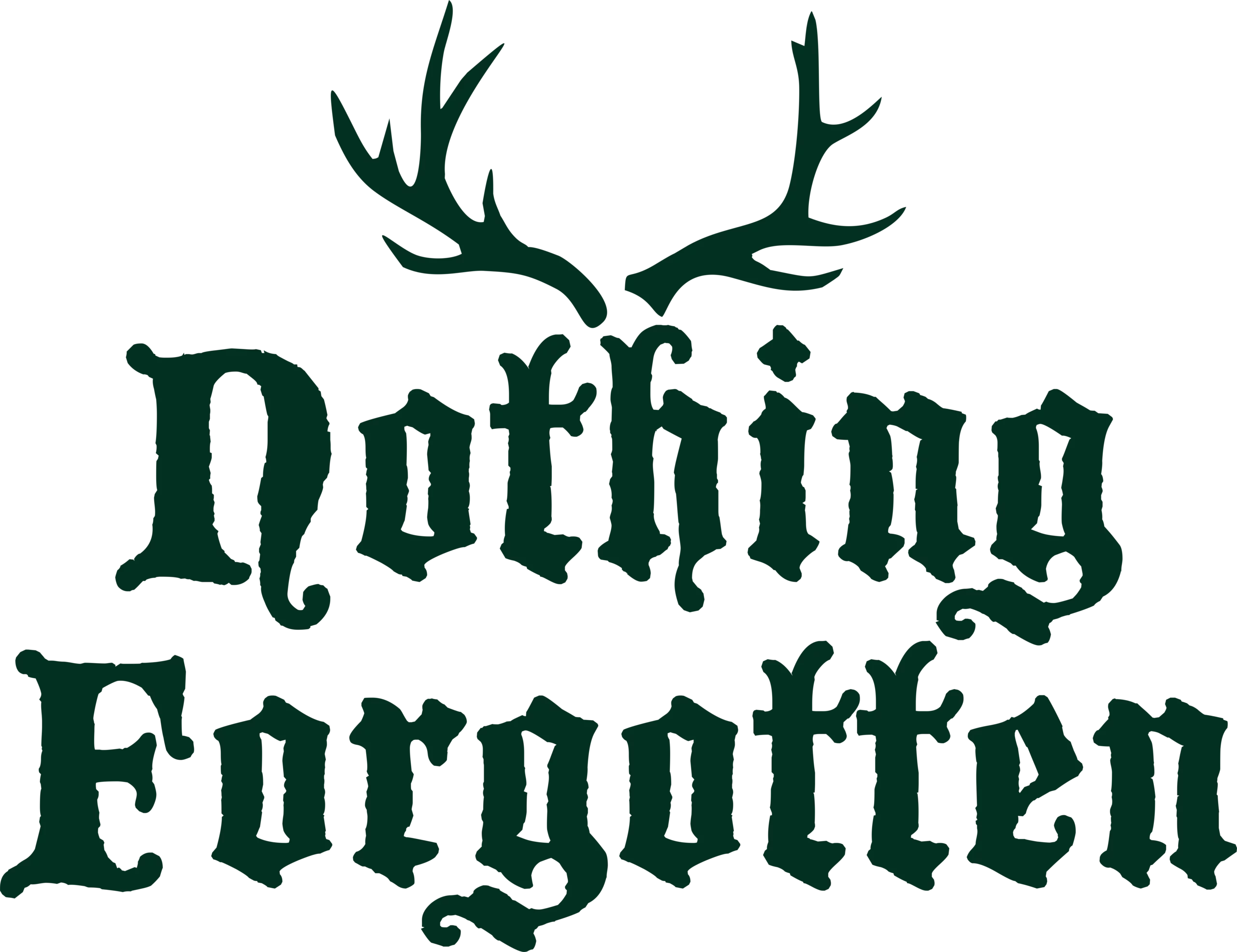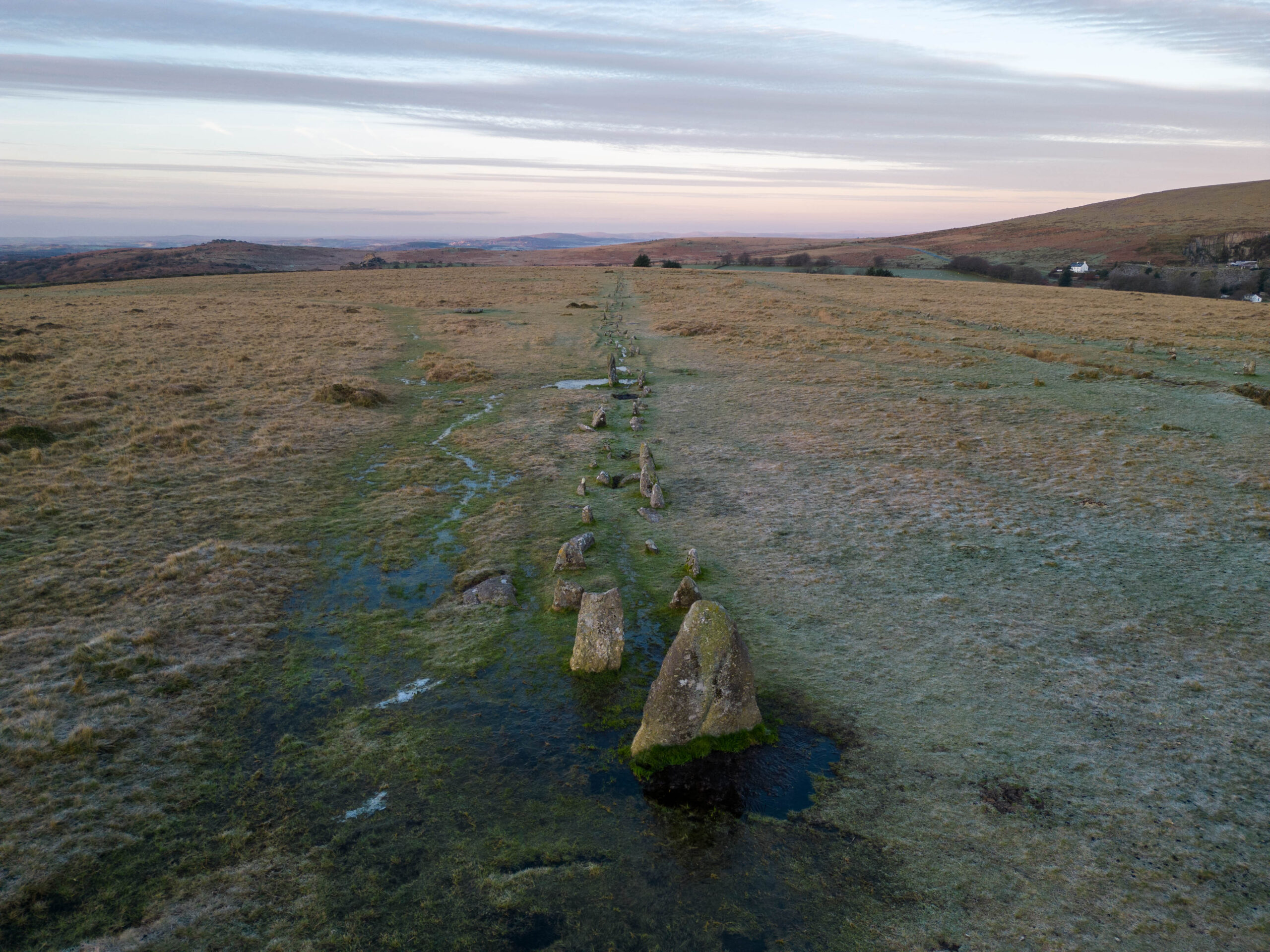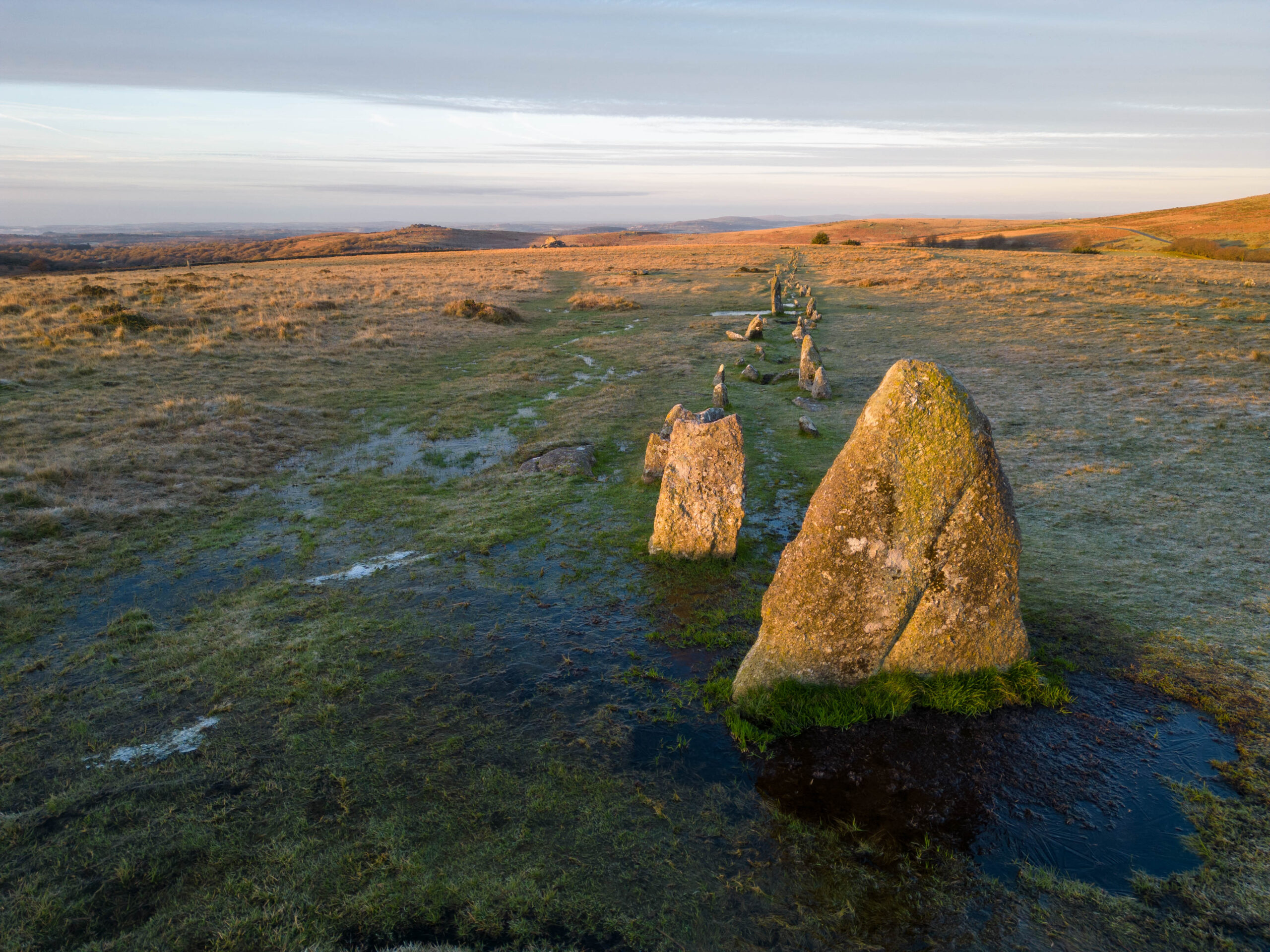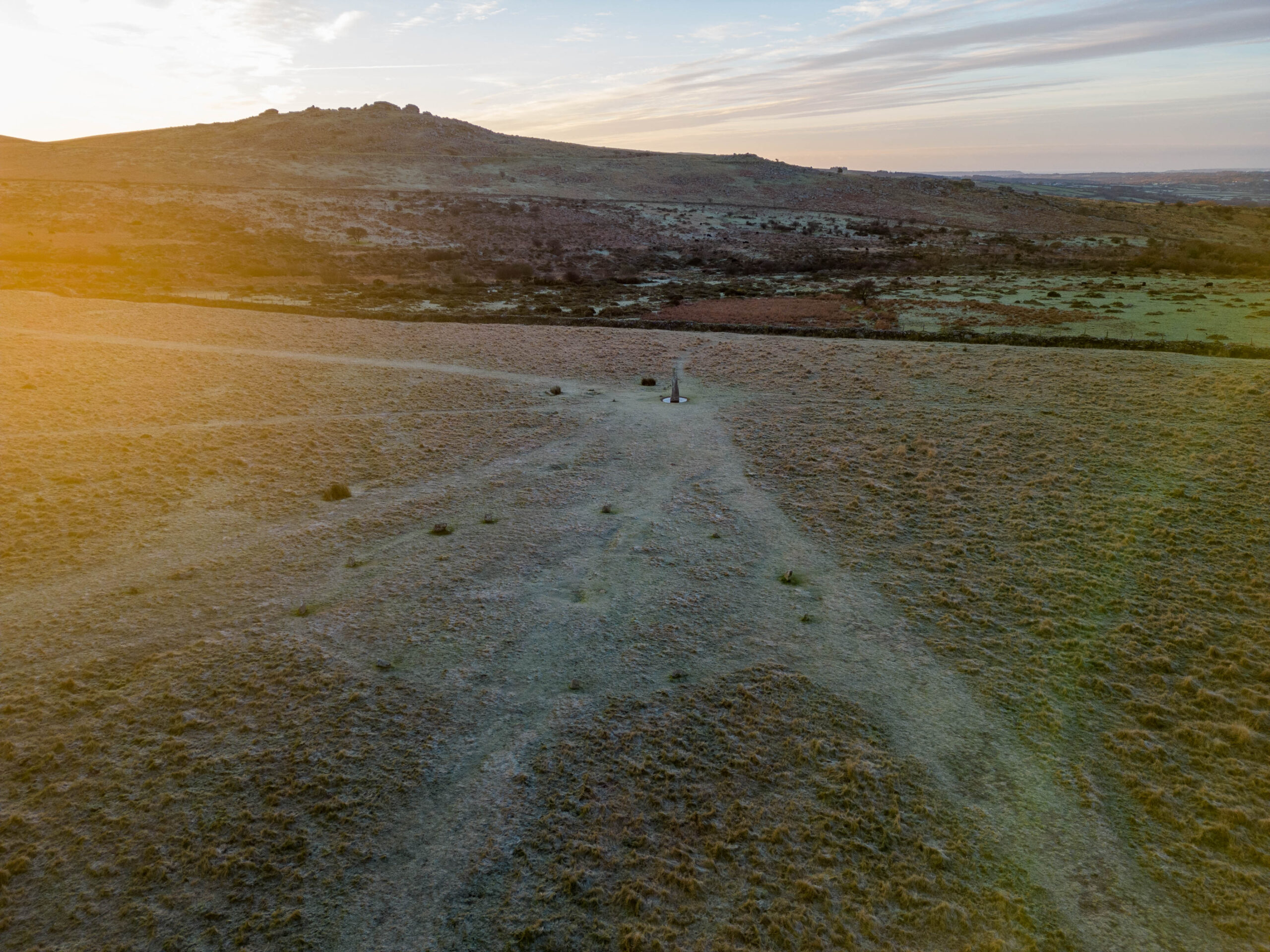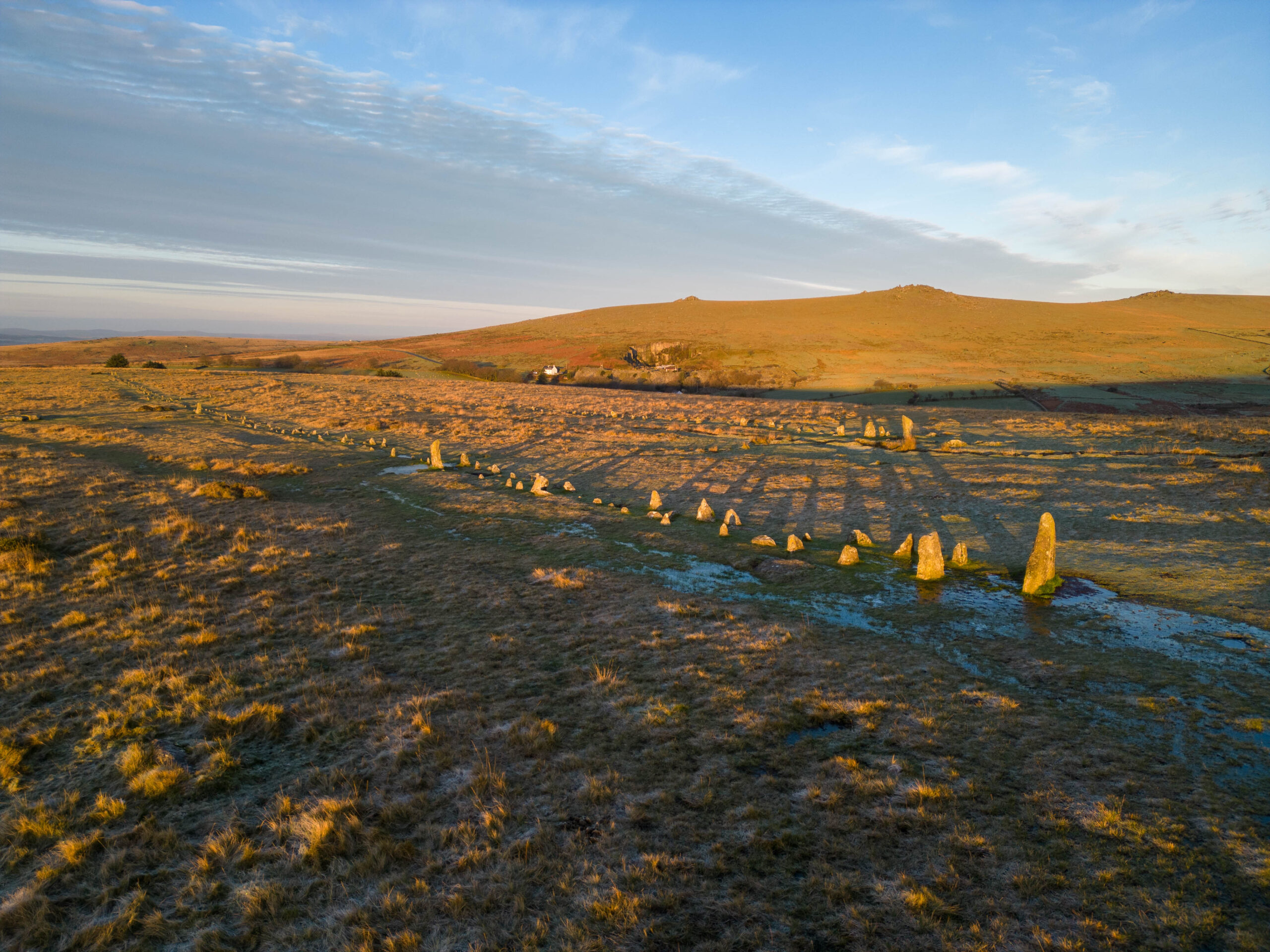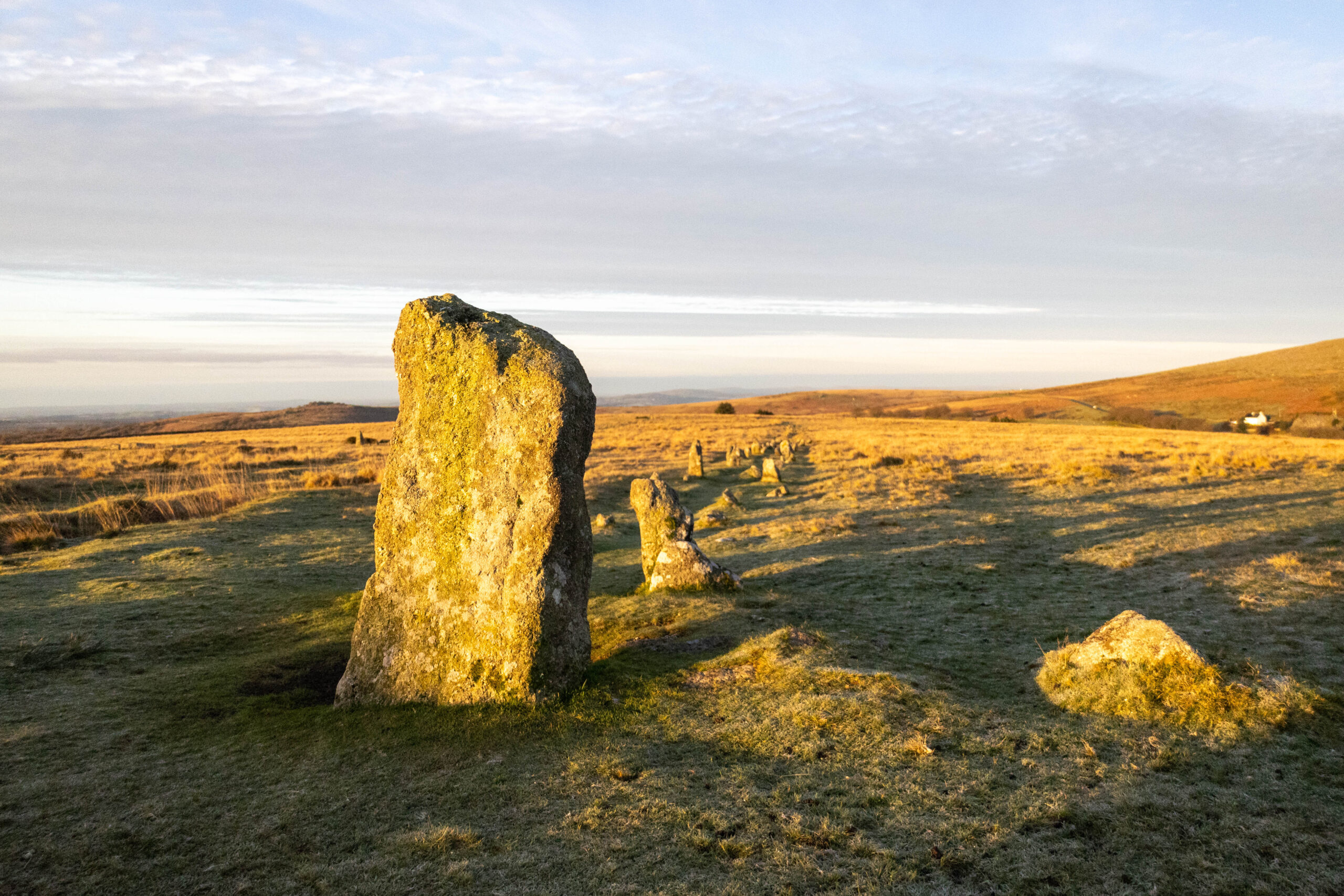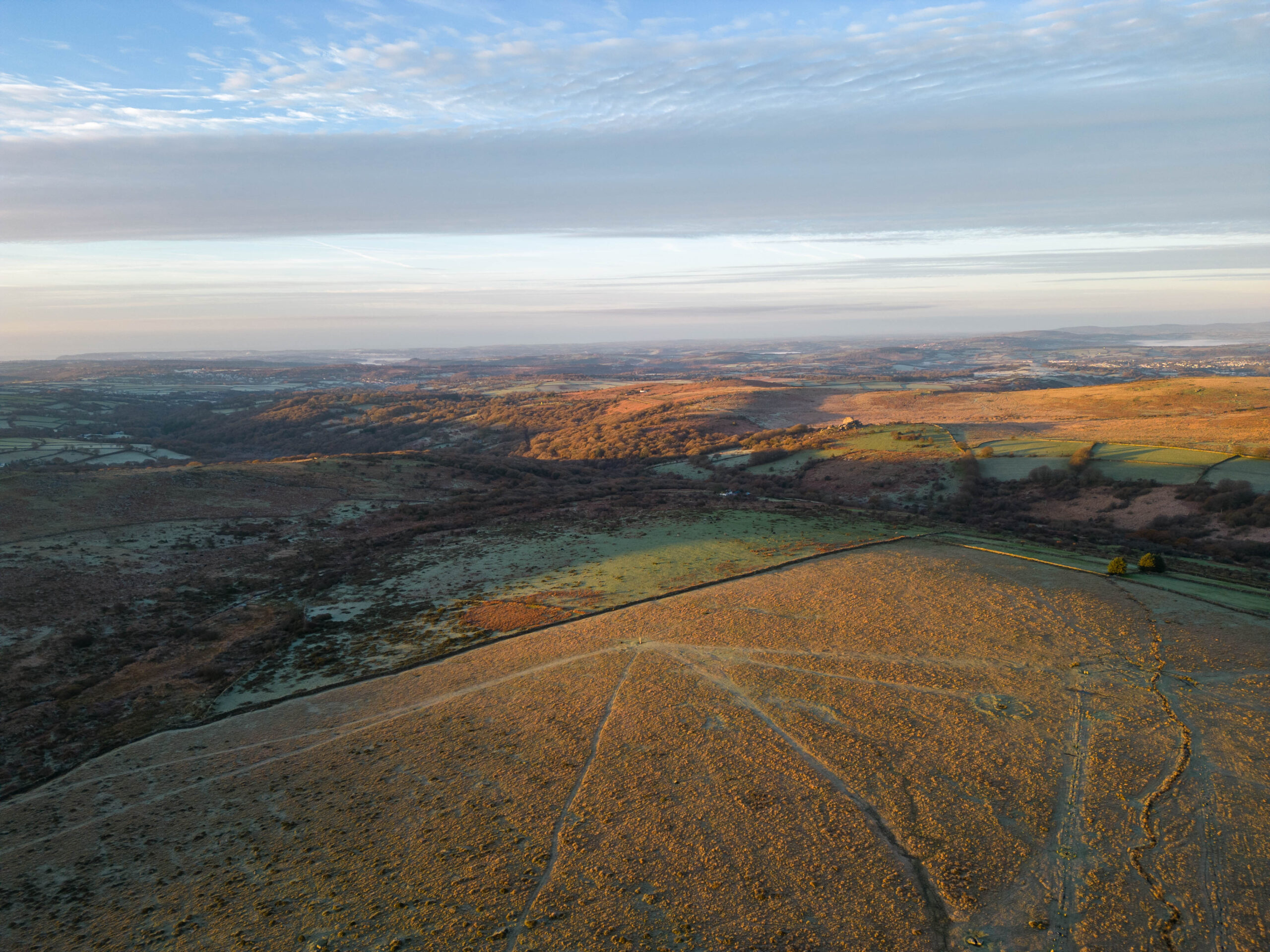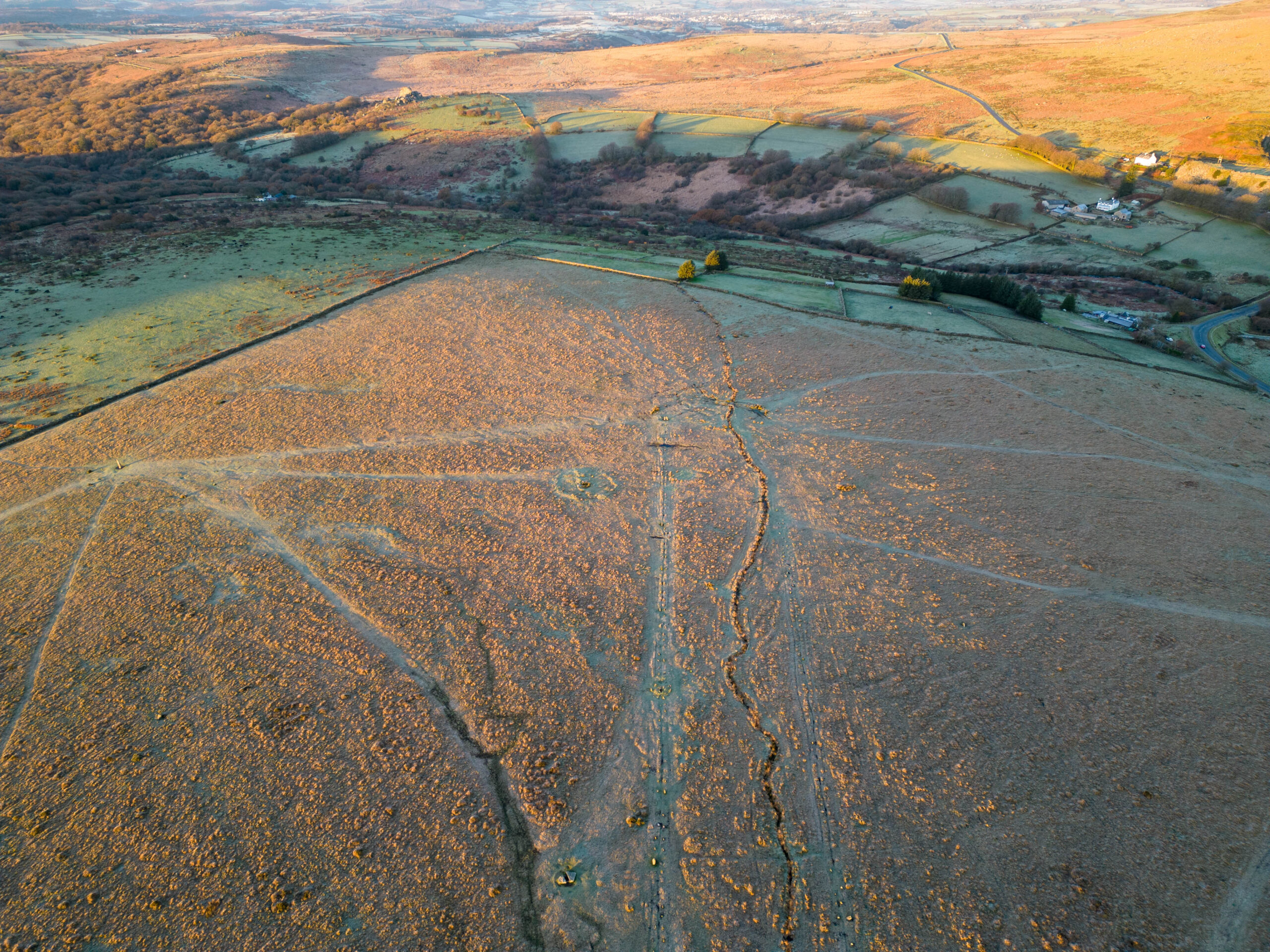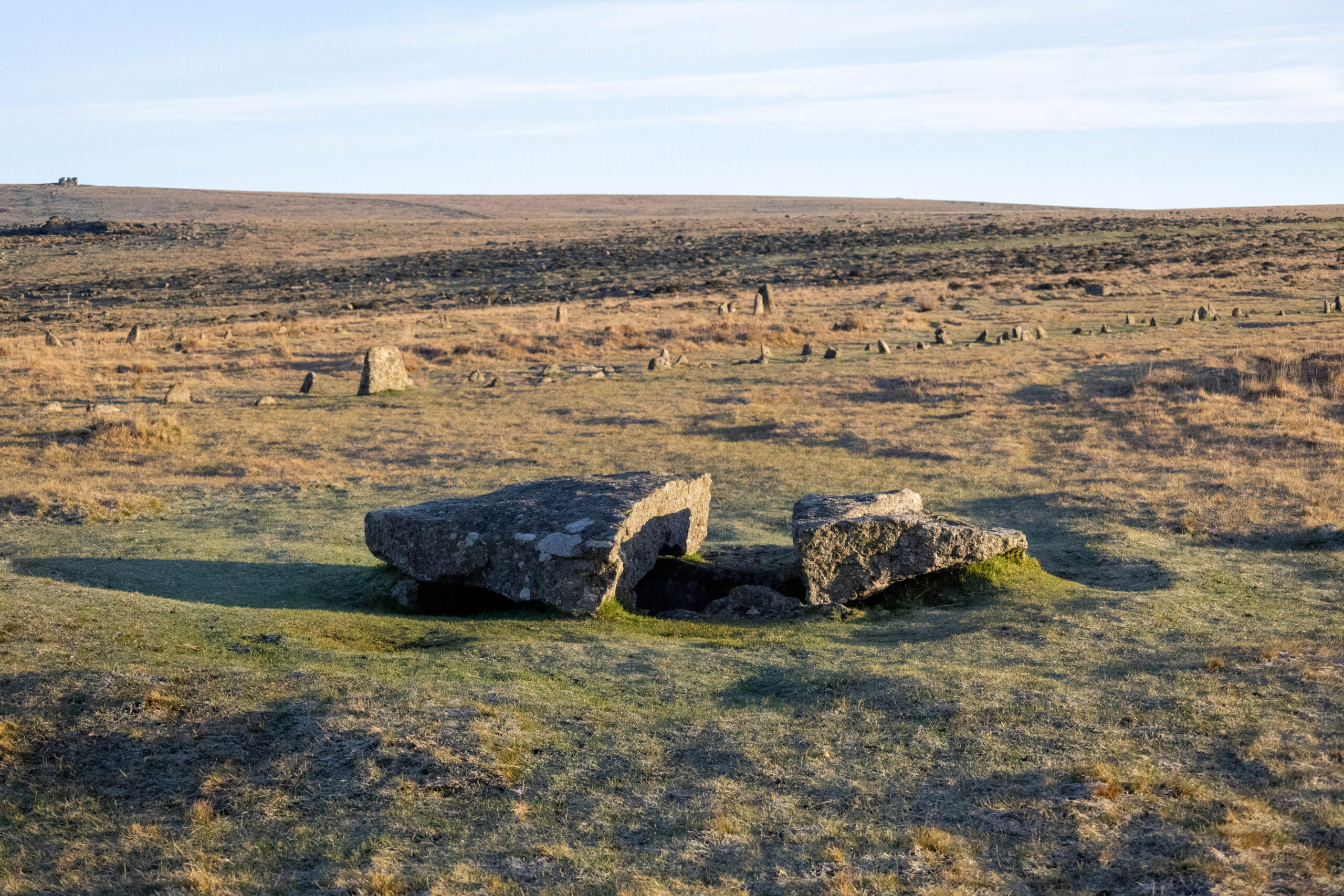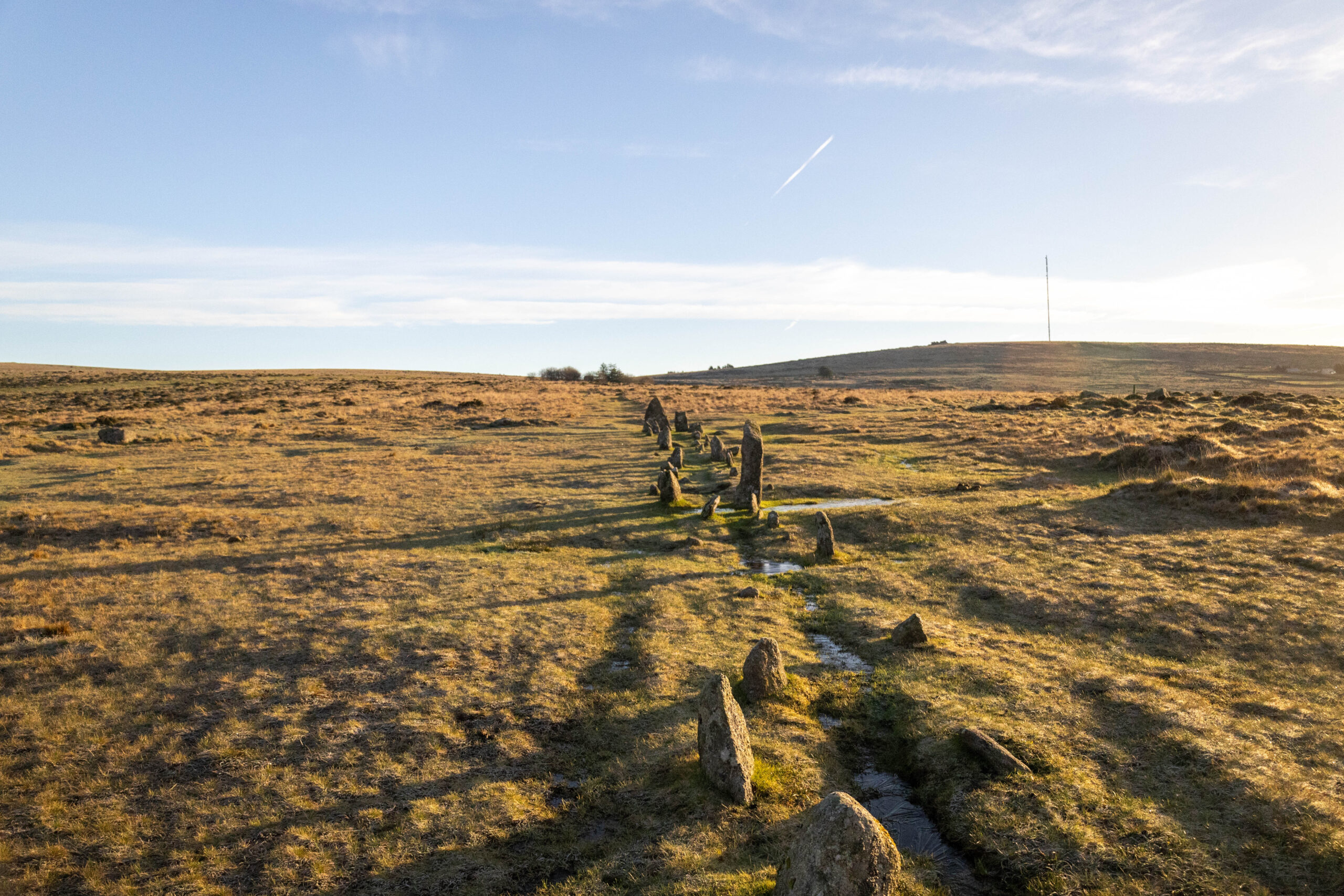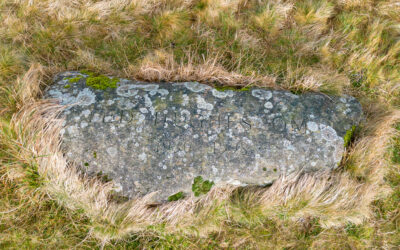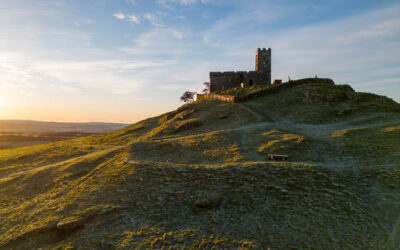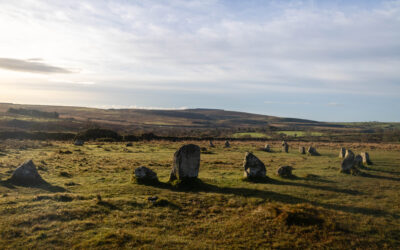Merrivale Complex of Stone Rows & Circles
Merrivale
Visiting ancient sites on Dartmoor sometimes requires some planning – either in terms of the hike required once you’ve parked up, or even about how to park up in the first place – the winding country lanes on the edge of the moor can be quite confusing even in the days of satnav. Some of the more amazing sites are frankly quite difficult to reach for the casual visitor.
In terms of maximum reward for minimum effort, I’d have to put Merrivale at the top of the pile. It’s an elaborate site with several stone rows raking across the landscape, more than one stone circle, a large standing stone and a couple of burial cists. But it’s also very easy to get to, being a 10-minute walk from the nearest car park, which is off the main B-Road between Princetown and Tavistock.
Being so accessible, it’s also fairly common to find fellow travellers here. Last time I was there, a woman in floating dresses was walking up and down the stone rows flicking a wooden wand, presumably engrossed in some private ritual.
The site is known as the Plague Market, or the Potato Market, in many reference texts. The story goes that in 1625 Tavistock was stricken with the bubonic plague, and people forbidden from entering or leaving. Goods were left here for the locals to collect, and pay for by placing coins in a pot of vinegar.
Getting to it involves hopping over a leat which spills out much of its water, even in dry periods, over the site. The ground is often waterlogged. But quickly you come up to the eastern end of the two double stone rows which snake out into the distance, more or less straight and more or less parallel to one another.
In the middle of the southern of the two double rows there is a cist with an impressive capstone, broken in two.
Further south, at the end of the two long rows, there is a small stone circle with a large menhir standing watch nearby.
What does it all mean? That is less clear. Legendary Dartmoor’s article on it contains some excellent historical research on the writings about the site, including theories dating back to the 1800s that it was used for druidic chariot racing, and more recent speculation about it guiding in UFOs for a landing. Clearly, it was a propitious place for funerals at one time. Various attempts have been made to explain its alignment to stars, sunsets and natural landmarks, but with no real conclusions to be drawn we are left with what it is, and probably has been for most of the last 4000 years: an intriguing feature in this fairly bleak landscape that leaves our imaginations free to connect the dots.
Other Noteworthy Places…
Ted Hughes Memorial
The memorial to the poet Ted Hughes is to be found near the source of one of his favourite rivers, the Taw in North Devon
Brent Tor Church – St Michael de Rupe
On the western edge of Dartmoor, an ancient church sits atop a plug of basalt, with commanding views over West Devon and Cornwall…
Ringmoor & Brisworthy Stone Circles
On the southern edge of Dartmoor you can find Brisworthy Stone circle – a beautiful circle in wonderful surroundings. A short hop away there’s also the Ringmoor Down circle and avenue.
